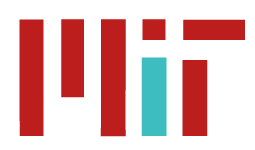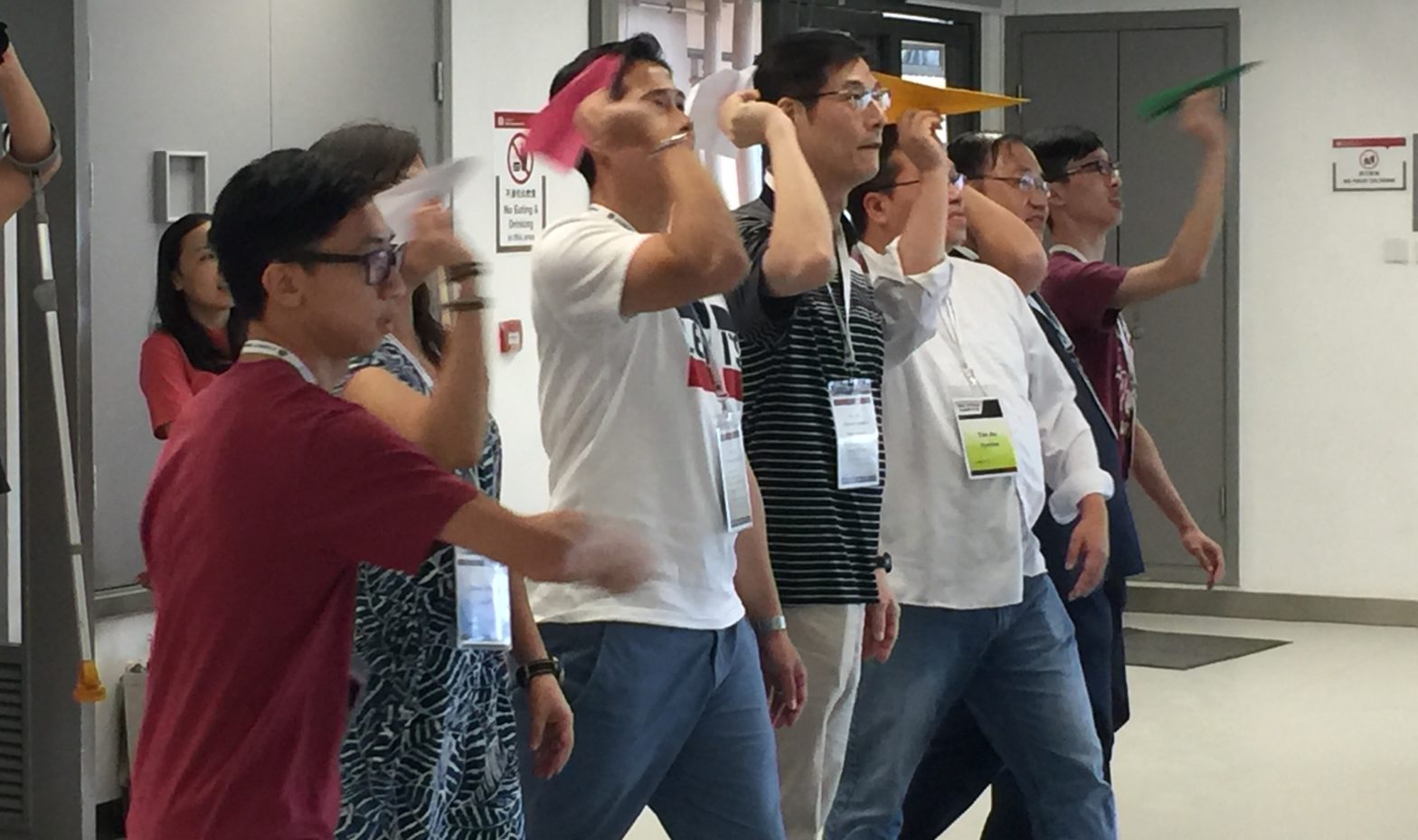
A group of students cranes their necks, watching a giant red balloon float up through the courtyard of a 10-story building. The balloon’s precious cargo: CubeSats—mini satellites designed and built by students to collect data from high up in the air through motion, temperature, and light sensors. This scene, part of a 2-week STEAM Camp for students in Hong Kong, is an exciting example of hands-on learning in engineering and design. But what is it exactly that the students are learning through this challenge, and who can tell when that learning is happening?
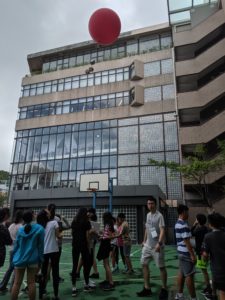
The MIT STEAM Camp ran for its third year in the summer of 2019, through a partnership between the J-WEL group at MIT, Catalyst Education Labs in Hong Kong, and the Chinese International School. Along with 200 students, around 20 teachers also participated in the camp to understand what MIT’s approach to learning looks like and how they can do more project-based learning in their own school.
One important piece of that capacity building includes answering the big question: what are students learning and what does that look like? In order to help teachers approach this question in the context of the camp modules and beyond, our team journeyed to Hong Kong to run a week-long professional development around the Beyond Rubrics toolkit. The toolkit includes a set of customizable assessment tools designed to help teachers, and students themselves, collect in-the-moment evidence of students demonstrating future-ready skills such as collaboration and risk-taking.
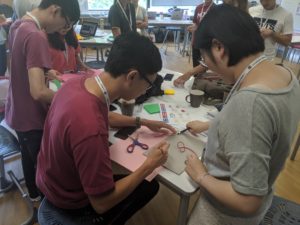 The PD program was embedded into the camp, which provided the perfect setting for teachers to try out the observation methods and assessment tools in rich project-based learning environments. We started out by modeling the Sparkle Sleuth tool, the Stuck Station, and a new addition to the toolkit, the Process Punch Card, while teachers created inventions that would keep people cool on hot days. Then they took the reigns: as some teachers tinkered with paper airplanes, the rest took turns watching for evidence of their peers engaging in meaningful social scaffolding and learning from risk. These two constructs are too-often deprioritized in traditional school settings, so we wanted to emphasize their importance for both teachers and students. And finally, armed with digital tablets and sparkle slips, teachers joined the student modules, such as the CubeSat project, to document students’ learning of these same skills. Doing this gave them a safe place to practice the approach before they implement embedded assessments in their regular classrooms. This was the core model of the Beyond Rubrics PD offering—scaffolded practice with project-based modules in increasingly authentic contexts—that enabled teachers to leave their comfort zone and break free of traditional assessment methods.
The PD program was embedded into the camp, which provided the perfect setting for teachers to try out the observation methods and assessment tools in rich project-based learning environments. We started out by modeling the Sparkle Sleuth tool, the Stuck Station, and a new addition to the toolkit, the Process Punch Card, while teachers created inventions that would keep people cool on hot days. Then they took the reigns: as some teachers tinkered with paper airplanes, the rest took turns watching for evidence of their peers engaging in meaningful social scaffolding and learning from risk. These two constructs are too-often deprioritized in traditional school settings, so we wanted to emphasize their importance for both teachers and students. And finally, armed with digital tablets and sparkle slips, teachers joined the student modules, such as the CubeSat project, to document students’ learning of these same skills. Doing this gave them a safe place to practice the approach before they implement embedded assessments in their regular classrooms. This was the core model of the Beyond Rubrics PD offering—scaffolded practice with project-based modules in increasingly authentic contexts—that enabled teachers to leave their comfort zone and break free of traditional assessment methods.
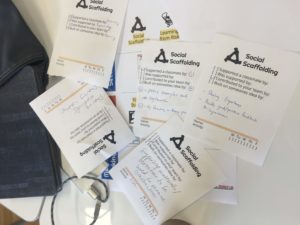 Once evidence had been collected, it was time to lay it all out and interpret it. What does this evidence tell us about what and how students are learning? What does it suggest we might want to do more or less of to facilitate their learning journey? Here are some examples of the evidence of learning and the insights the group took from it. In this step of the process, context helps us make meaning, so teachers discussed which tools they felt provided better quality evidence, and what tweaks they would make to fit their own classroom culture.
Once evidence had been collected, it was time to lay it all out and interpret it. What does this evidence tell us about what and how students are learning? What does it suggest we might want to do more or less of to facilitate their learning journey? Here are some examples of the evidence of learning and the insights the group took from it. In this step of the process, context helps us make meaning, so teachers discussed which tools they felt provided better quality evidence, and what tweaks they would make to fit their own classroom culture.
After a week of working together, remaining open to new ideas, discussing embedded assessment in the Hong Kong context, and a typhoon thrown in for good measure, we left the teachers excited to try some of the approaches in the second week of the camp and in their own schools. So what’s next for embedded assessment in Hong Kong? Well, we’re looking forward to checking in with the group of teachers to hear how things go during the semester, and we’ll be keeping in touch with our Hong Kong friends at CIS and Catalyst to find more ways to collaborate. In addition, the STEAM Camp PD also presented an opportunity for us to conduct research on how teachers can build assessment capacity through the Beyond Rubrics toolkit and how we can best support them in that process. So our team will be doing analysis and writing for that part of our design-based research. And finally, we have big plans to take what we developed for the Hong Kong experience, iterate on the pedagogy and materials, and wrap it up into a PD package that educators can run for their own districts and schools. So keep an eye out for reports and resources coming soon that you might be able to use in your own setting!
